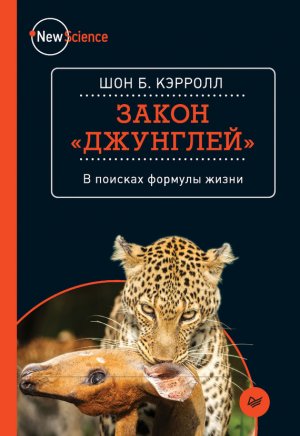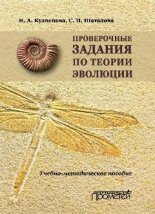Закон «джунглей». В поисках формулы жизни Кэрролл Шон

Энциклика папы римского также демонстрирует, какие новые альянсы возможны между отдельными группами, которые исторически не были союзниками. «Если мы действительно хотим сформировать экологию, позволяющую нам поправить все, что мы разрушили, то нельзя пренебрегать никакими ветвями наук и формами мудрости, включая религиозную».[4]
Общественная воля критически важна, и она должна превращаться в волю политическую. «Правительственная поддержка программ требует согласия граждан», – отмечал Фоге. Мы уже не одно десятилетие представляем себе, как лучше заботиться об окружающей среде и естественных ресурсах, для этого было принято много важных законов, в частности «Конвенция о международной торговле видами дикой фауны и флоры, находящимися под угрозой исчезновения», «Закон США об угрожаемых видах», «Закон США о защите морских млекопитающих», которые позволили спасти десятки видов.
Все научные рекомендации могут быть воплощены в жизнь только при политической поддержке. Ученые должны предоставлять политикам информацию, которая необходима им для грамотных действий. Я бы добавил, что есть еще один способ продвигать необходимые политические решения: ученые должны сами идти в политику.
Решения зависят от качественной науки, но их воплощение зависит от грамотного управления. Успех кампании по искоренению оспы, которая финансировалась не слишком хорошо, был достигнут благодаря превосходному управлению имевшимися материальными и человеческими ресурсами. Значительная заслуга в этом принадлежит Дональду Хендерсону. Во время съезда в Кении тогдашний генеральный директор ВОЗ обратился к Хендерсону и спросил, какая болезнь падет следующей. Хендерсон взял микрофон и заявил, что следующей такой болезнью будет плохой менеджмент.
Истории с озером Мендота, Йеллоустонским парком и Горонгозой – результат грамотного управления, в котором преуспели соответственно Служба природных ресурсов штата Висконсин, Служба охраны рыбных ресурсов и диких животных США и Служба национальных парков США, а также проект «Горонгоза» совместно со Службой национальных парков Мозамбика. Оскудение фауны, ухудшение качества воды и т. п. – все это зачастую связано с неграмотным управлением, а не с невежеством.
Цель может быть глобальной, но реализуется она всегда на местах. Наиболее эффективные приемы по борьбе с оспой были подобраны с учетом культурной специфики и нужд тех или иных регионов. Аналогично, что касается охраны и восстановления природы, глобальные достижения складываются из суммы многочисленных инициатив на местах.
Так, когда в Индонезии осознали опасности, связанные с неграмотной обработкой риса пестицидами, была развернута массовая кампания по организации полевых фермерских школ, где более миллиона крестьян обучили интегрированной борьбе с вредителями – и бурых цикадок вновь стали уничтожать их естественные враги. Кроме того, правительство запретило многие пестициды.
Сохранять оптимизм. Фоге говорит: «Проблема оптимиста в том, что окружающие думают: да он просто не понимает, что происходит. Но это просто образ жизни». Он предостерегает, что пессимизм имеет право на существование, но «брать пессимистов на содержание не следует».
Когда Грега Карра спросили, каков его девиз, он ответил: «Быть оптимистом, иначе все пророчества станут самоисполняющимися».
Мера цивилизованности в том, как люди относятся друг к другу. Фоге утверждает, что программа по вакцинации от оспы была «цивилизованной», так как защищала не только прививаемых людей, но и тех, кто их окружает, а также их еще не родившихся потомков.
Папа выражает подобную мысль, задаваясь вопросом: «С какой целью мы находимся в этом мире? Ради чего мы пришли в эту жизнь? Ради чего мы работаем и боремся? Почему эта земля нуждается в нас? Следует отдать себе отчет в том, что в игру вовлечено само наше достоинство. Мы первые заинтересованы в том, чтобы передать человечеству, которое придет после нас, планету, пригодную для обитания. Это – драма для нас самих, поскольку она ставит под вопрос смысл нашего прихода на эту землю».[5]
К этому пространному изречению я бы добавил еще три пункта о стоящих перед нами экологических вызовах. Во-первых, ни одна победа не одерживается сразу и везде. И оспа, и чума крупного рогатого скота были искоренены в одних странах гораздо раньше, чем в других. Горонгоза – всего один парк в одной стране на континенте, где львы исчезли в 26 странах. Важен любой прогресс, которого можно достичь, и если глобальные действия не предпринимаются, это не должно нас останавливать.
Так я подхожу ко второму тезису: если проблема важна, то некогда ждать, пока к ее решению подключатся все. Директор ВОЗ был против программы по искоренению оспы, и даже фонд ЮНИСЕФ отказался ее финансировать.
Наконец, важен выбор отдельных людей. У большинства из нас нет таких ресурсов, как у Грега Карра или директора ВОЗ, но важнее всего, на что мы решим (или откажемся) бросить имеющиеся ресурсы. Но, независимо от ресурсов, у каждого есть выбор, какой вклад внести. Здесь я расскажу мою заключительную историю.
Двенадцатого октября 1977 г. двух детей, серьезно больных оспой, доставили в госпиталь города Мерка близ Могадишо, столицы Сомали. Их нужно было изолировать. Али Маов Маалин, участливый больничный повар 23 лет, вызвался показать водителю, куда ехать, и забрался на заднее сиденье «лендровера», сев рядом с больными детьми.
Через две недели у Маалина началась лихорадка и сыпь, которую сначала приняли за ветрянку. Маалин разгуливал по больнице до тех пор, пока ему не диагностировали оспу. Все сотрудники больницы обязательно проходили вакцинацию от оспы, но в тот день, когда Маалину требовалось сделать прививку, он слишком перепугался. «Казалось, что будет больно, как от пули», – признавался он впоследствии.
Случай с Маалином вынудил ВОЗ вызвать в госпиталь всех эпидемиологов, работавших в Сомали, чтобы сдержать болезнь. В госпиталь перестали принимать новых пациентов, все, кто там был, попали в карантин, больницу взяли под круглосуточную охрану. Всех, кто общался с Маалином, были под наблюдением. Привили всех, кто жил поблизости от дома Маалина, а также все больничное отделение. Организовали КПП, чтобы всех, кто прибывает в Мерку или покидает город, можно было остановить, обследовать и привить.
Усилия оправдались. Новых случаев оспы больше не возникло ни в Сомали, ни в других странах, если уж на то пошло. Али Маов Маалин был последним человеком в мире, подхватившим оспу.
Спустя 31 год после активной медицинской кампании, в которой участвовали более 10 000 волонтеров и врачей, Сомали также была очищена от полиомиелита. Одним из тех, кто в течение нескольких лет колесил по всей стране в качестве координатора ВОЗ, уговаривая родителей прививать детей от полиомиелита, был Али Маов Маалин. «Я всем рассказывал, что именно я последним переболел оспой, – объяснял он. – Сомали была последней страной, где существовала оспа. Я хотел добиться, чтобы здесь же был окончательно побежден и полиомиелит».
Благодарности
Эта книга родилась в Серенгети и была завершена в Горонгозе. Мне, человеку, родившемуся в таком экологическом «могильнике», как Толидо в штате Огайо, и мечтавшему побывать в дальних странах, где полно диких животных, на редкость повезло. А если появляется возможность поделиться впечатлениями об этих местах и всем пережитым с дорогими мне людьми, то чего еще желать?
Особая благодарность полагается моей жене Джейми, которая не испугалась африканских тягот и уже готова туда переехать; нашим сыновьям Уиллу, Патрику и Крису, а также Кристен Финкбейнер – самому компанейскому товарищу по сафари. Спасибо нашему превосходному проводнику Мозесу. Асанте сана!
Также большое спасибо Грегу Карру и нашим друзьям из Горонгозы: Майку Пинго, Васко Галанте, Майку Марчингтону, Марку Сталмансу, Фрейзеру Гиру, Сандре Шонбахлер, Педро Муагуре, Матеусу Мутембе, Паоле Боули, Робу Принглу, Райану Лонгу, Корине Тарните, Мэтту Джордану, Таре Массад и Джеймсу Бирну за их гостеприимство, профессионализм и самоотдачу. Также спасибо послу Дугу Гриффитсу и Алисии, Клэр и Элен Гриффитс за то, что составили нам компанию на таких незабываемых фотоохотах и закатах.
Эта книга не появилась бы без помощи и участия многих людей. Мои благодарности Джо Голдстейну, Эду Школьнику, Рою Вагелосу, Роберту Пэйну, Тони Синклеру, Джиму Китчеллу, Стиву Карпентеру, Джиму Эддису и Грегу Карру за то, что они великодушно уделили мне время и рассказали о своей работе, предоставили мне документы и фотографии.
Были и те, у кого я не смог взять интервью, но в таких случаях мне оказали огромную помощь члены их семей, архивисты, библиотекари, благодаря которым удалось собрать истории об этих людях. Спасибо Нине Болтер из Медицинского института Говарда Хьюза за то, что обращалась к другим библиотекарям и помогала мне доставать многочисленные важные документы. Спасибо Ивару Стоккеланду из библиотеки Норвежского полярного института и сотрудникам Бодлианской библиотеки в Оксфорде за то, что предоставили материалы о Чарльзе Элтоне; сотрудникам Каунтвейской медицинской библиотеки из Гарвардской медицинской школы – за материалы об Уолтере Кэнноне; сотрудникам архива Института Пастера и Оливье Моно – за снимки Жака Моно и фотографии, на которых запечатлен сам Жак Моно, а также Дэвиду Роули – за воспоминания о его матери Джанет. Также спасибо Нику Джикомсу за услуги, оказанные в библиотеке Бостона.
Огромное спасибо Меган Марш-МакГлоун, помогавшей мне вести исследования и писать текст, отследившей бесчисленные источники, подготовившей библиографический список и примечания, добывшей разрешения на публикацию всех иллюстраций, подготовившей рукопись. Особая благодарность Лиэнн Олдз, нарисовавшей многие иллюстрации и подготовившей все рисунки к печати.
Я также благодарю Денниса Лю, Дэвида Элиско, Джона Рубина, Лауру Бонетту, Энн Таррант и Джейми Кэрролл за ценные замечания по черновикам книги и Эндрю, Гарри и Саймона Левина – за их вдумчивую экспертную оценку.
Особая благодарность также причитается Элисон Кэлетт, моему редактору из издательства Princeton University Press. Эта книга получилась такой увлекательной благодаря тому, что Эллисон сразу поставила мне необычную и непростую задачу: написать «короткую и провокационную книгу по биологии». Спасибо моему агенту Рассу Гейлену за мудрые советы и поддержку, а также за то, что у меня получилась именно такая книга, какую я хотел написать.
Список литературы
Abelson, P. H., E. T. Bolton, and E. Aldous (1952) “Utilization of Carbon Dioxide in the Synthesis of Proteins by Escherichia coli. II.” Journal of Biological Chemistry 198: 173–178.
Addis, J. T. (1992) “Policy and Practice in UW-WDNR Collaborative Programs.” In J. F. Kitchell (ed.), Food Web Management: A Case Study of Lake Mendota. New York: Springer-Verlag: 7–16.
Alfirevic, A., D. Neely, J. Armitage, H. Chinoy, et al. (2014) “Phenotype Standardization for Statin-Induced Myotoxicity.” Clinical Pharmacology & Therapeutics 96(4): 470–476.
Anderson, N. L., and N. G. Anderson (2002) “The Human Plasma Proteome: History, Character, and Diagnostic Prospects.” Molecular and Cellular Proteomics 1: 845–867.
Anker, P. (2001) Imperial Ecology: Environmental Order in the British Empire, 1895–1945. Cambridge, Massachusetts: Harvard University Press.
Bangs, E. (2005) “How Did Wolves Get Back to Yellowstone?” Yellowstone Science 13: 4.
Barker, R. (2005) Blockade Busters: Cheating Hitler’s Reich of Vital War Supplies. South Yorkshire, England: Pen & Sword Books.
Baxa, D. V., T. Kurobe, K. A. Ger, P. W. Lehman, and S. J. Teh (2010) “Estimating the Abundance of Toxic Microcystis in the San Francisco Estuary Using Quantitative Real-Time PCR.” Harmful Algae 9: 342–349.
Benison, S., A. C. Barger, and E. L. Wolfe (1987) Walter B. Cannon: The Life and Times of a Young Scientist. Cambridge, Massachusetts: Harvard University Press.
Berger, K. M., E. M. Gese, and J. Berger (2008) “Indirect Effects and Traditional Trophic Cascades: A Test Involving Wolves, Coyotes, and Pronghorn.” Ecology 89(3): 818–828.
Bernes, C., S. R. Carpenter, A. Gardmark, P. Larsson, et al. (2015). “What Is the Influence of a Reduction of Planktivorous and Benthivorous Fish on Water Quality in Temperate Eutrophic Lakes? A Systematic Review.” Environmental Evidence 4:7: 1–28.
Beschta, R. L. (2005) “Reduced Cottonwood Recruitment Following Extirpation of Wolves in Yellowstone’s Northern Range.” Ecology 86: 391–403.
Bianconi, E., A. Piovesan, F. Facchin, A. Beraudi, et al. (2013) “An Estimation of the Number of Cells in the Human Body.” Annals of Human Biology Early Online 40: 1–11.
Biggs, P. M. (2010) “Walter Plowright. 20 July 1923–20 February 2010.” Biographical Memoirs of Fellows of the Royal Society 56: 341–358.
Bilheimer, D. W., S. M. Grundy, M. S. Brown, and J. L. Goldstein. (1983) “Mevinolin and Colestipol Stimulate Receptor-Mediated Clearance of Low Density Lipoprotein from Plasma in Familial Hypercholesterolemia Heterozygotes.” Proceedings of the National Academy of Sciences USA 80(13): 4124–4128.
Binney, G. (1926) With Seaplane and Sledge in the Arctic. New York: George H. Doran.
Bishop, J. M. (2003) How to Win the Nobel Prize: An Unexpected Life in Science. London: Harvard University Press.
Brashares, J. S., L. R. Prugh, C. J. Stoner, and C. W. Epps (2010) “Ecological and Conservation Implications of Mesopredator Release.” In J. Terborgh and J. A. Estes (eds.), Trophic Cascades: Predators, Prey, and the Changing Dynamics of Nature. Washington, DC: Island Press: 221–240.
Brock, T. D. (1985) A Eutrophic Lake: Lake Mendota, Wisconsin. New York: Springer-Verlag.
Brown, M. S., and J. L. Goldstein (1975) “Regulation of the Activity of the Low Density Lipoprotein Receptor in Human Fibroblasts.” Cell 6: 307–316.
– – (1981) “Lowering Plasma Cholesterol by Raising LDL Receptors.” New England Journal of Medicine 305(9): 515–517.
– – (1993) “A Receptor-Mediated Pathway for Cholesterol Homeostasis.” In T. Frngsmyr and J. Lindsten (eds.), Nobel Lectures, Physiology of Medicine 1981–1990. Singapore: World Scientific: 284–324. Available at nobelprize.org.
– – (2004) “A Tribute to Akira Endo, Discoverer of a ‘Penicillin’ for Cholesterol.” Atherosclerosis Supplements 5: 13–16.
Brown, M. S., S. E. Dana, and J. L. Goldstein (1973) “Regulation of 3-Hydroxy-3-Methylglutaryl Coenzyme A Reductase Activity in Human Fibroblasts by Lipoproteins.” Proceedings of the National Academy of Sciences USA 70(7): 2162–2166.
– – (1974) “Regulation of 3– Hydroxy– 3– Methylglutaryl Coenzyme A Reductase Activity in Cultured Human Fibroblasts.” Journal of Biological Chemistry 249: 789–796.
Brown, M. S., J. R. Faust, J. L. Goldstein, I. Kaneko, and A. Endo (1978) “Induction of 3-Hydroxy-3-Methylglutaryl Coenzyme A Reductase Activity in Human Fibroblasts Incubated with Compactin (ML– 236B), a Competitive Inhibitor of the Reductase.” Journal of Biological Chemistry 253: 1121–1128.
Cannon, W. B. (1873–1945) Walter Bradford Cannon papers, 1873–1945, 1972–1974 (inclusive), 1881–1945 (bulk). H MS c40. Harvard Medical Library, Francis A. Countway Library of Medicine, Boston.
– – (1898) “The Movements of the Stomach Studied by Means of the Rntgen Rays.” American Journal of Physiology 1: 359–382.
– – (1909) “The Influence of Emotional States on the Functions of the Alimentary Canal.” American Journal of Medical Sciences 137: 480–487.
– – (1911a) The Mechanical Factors of Digestion. London: Edward Arnold.
– – (1911b) “The Stimulation of Adrenal Secretion by Emotional Excitement.” Proceedings of the American Philosophical Society 50(199): 226–227.
– – (1914) “The Emergency Function of the Adrenal Medulla in Pain and the Major Emotions.” American Journal of Physiology 33: 356–372.
– – (1927) Bodily Changes in Pain, Hungr, Fear and Rage: An Account of Recent Researches into the Function of Emotional Excitement. New York and London: D. Appleton and Company.
– – (1928) “Reasons for Optimism in the Care of the Sick.” New England Journal of Medicine 199(13): 593–597.
– – (1929) “Organization for Physiological Homeostasis.” Physiological Reviews 9(3): 399–431.
– – (1963) The Wisdom of the Body. Revised and enlarged ed. New York: W. W. Norton & Company.
– – (1972) The Life and Contributions of Walter Bradford Cannon. Edited by C. McC. Brooks, K. Koizumi, and J. O. Pinkston. New York: Downstate Medical Center, State University of New York.
Cannon, W. B., and D. de la Paz (1911) “Emotional Stimulation of Adrenal Secretion.” American Journal of Physiology 28: 64–70.
Carpenter, S. R., J. F. Kitchell, and J. R. Hodgson (1985) “Cascading Trophic Interactions and Lake Productivity.” BioScience 35(10): 634–639.
Carpenter, S. R., J. F. Kitchell, J. R. Hodgson, P. A. Cochran, et al. (1987) “Regulation of Lake Primary Productivity by Food Web Structure.” Ecology 68(6): 1863–1876.
Carroll, S. B. (2013) “Brave Genius: a Scientist, a Philosopher, and Their Daring Adventures from the French Resistance to the Nobel Prize.” New York: Crown.
Chandler, R. F. Jr. (1992) An Adventure in Applied Science: A History of the International Rice Research Institute. Los Baos, Laguna, Philippines: International Rice Research Institute.
Cumming, D. H. M, C. Mackie, S. Magane, and R. D. Taylor (1994) Aerial Census of Large Herbivores in the Gorongosa National Park and the Marromeu Area of the Zambezi Delta in Mozambique. Unpublished report, IUCN ROSA, Harare, 10 pp., cited in K. M. Dunham (2004) “Aerial Survey of Large Herbivores in Gorongosa National Park, Mozambique: 2004.” A Report for The Gregory C. Carr Foundation. http://www carrfoundation.org.
Darwin, C. (1872) The Origin of Species by Means of Natural Selection, or The Preservation of Favoured Races in the Struggle for Life. Sixth ed. London: John Murray.
Debr, P. (1996) Jacques Monod. Paris: Flammarion.
De Klein, A., A. G. van Kessel, G. Grosveld, C. R. Bartram, et al. (1982) “A Cellular Oncogene Is Translocated to the Philadelphia Chromosome in Chronic Myelocytic Leukaemia.” Nature 300: 765–767.
Di Fiore, R., A. D’Anneo, G. Tesoriere, and R. Vento (2013) “RB1 in Cancer: Different Mechanisms of RB1 Inactivation and Alterations of pRb Pathway in Tumorigenesis.” Journal of Cellular Physiology 228:1676–1687.
Drach, P., and J. Monod (1935) “Rapport prliminaire sur les observations d’histoire naturelle faites pendant la camoagne de la ‘Pourquios-Pas?’ au Groenland.” Annales Hydrographiques 2: 3–11.
Druker, B. J. (2003) “David A. Karnofsky Award Lecture. Imatinib as a Paradigm of Targeted Therapies.” Journal of Clinical Oncology 21(23 suppl): 239–245.
– – (2014) “Janet Rowley (1925–2013).” Nature 505: 484.
Dublin, H. T., and I. Douglas-Hamilton (1987) “Status and Trends of Elephants in the Serengeti-Mara Ecosystem.” African Journal of Ecology 25: 19–33.
Dubos, R. J. (1965) Man Adapting. New Haven, Connecticut: Yale University Press.
Duggins, D. O. (1980) “Kelp Beds and Sea Otters: An Experimental Approach.” Ecology 61(3): 447–453.
Dulvy, N. K., S. L. Fowler, J. A. Musick, R. D. Cavanagh, et al. (2014). “Extinction Risk and Conservation of the World’s Sharks and Rays.” eLife 3: e00590.
Dunham, K. M. (2004) “Aerial Survey of Large Herbivores in Gorongosa National Park, Mozambique: 2004.” Report for the Gregory C. Carr Foundation. http://www.carrfoundation.org.
Dutton, P. (1994) “A Dream Becomes a Nightmare.” African Wildlife 48(6): 6–14.
Dyck, V. A., and B. Thomas (1979) “The Brown Planthopper Problem.” In Brown Planthopper: Threat to Rice Production in Asia. Los Baos, Philippines: International Rice Research Institute: 3–17.
Eisenberg, C. (2010) The Wolf’s Tooth: Keystone Predators, Trophic Cascades, and Biodiversity. Washington, DC: Island Press.
Eisenberg, C., S. T. Seager, and D. E. Hibbs (2013) “Wolf, Elk, and Aspen Food Web Relationships: Context and Complexity.” Forest Ecology and Management 299: 70–80.
Elton, C. S. (1924) “Periodic Fluctuations in the Numbers of Animals: Their Causes and Effects.” British Journal of Experimental Biology 2: 119–163.
– – (1927) Animal Ecology. New York: Macmillan.
– – (1983) “The Oxford University Expedition to Spitsbergen in 1921: An Account, Done in 1978–1983.” Norsk Polarinstitutt Bibliotek, Norsk Polarinstitutt, Oslo. http://brage.bibsys.no/xmlui/handle/11250/218913.
Elton, C. S., and M. Nicholson (1942) “The Ten-Year Cycle in Numbers of the Lynx in Canada.” Journal of Animal Ecology 11(2): 215–244.
Endo, A. (1992) “The Discovery and Development of HMG-CoA Reductase Inhibitors.” Journal of Lipid Research 33: 1569–1582.
– – (2004) “The Origin of the Statins.” Atherosclerosis Supplements 5: 125–130.
– – (2008) “A Gift From Nature: The Birth of the Statins.” Nature Medicine 14(10): 1050–1025.
– – (2010) “A Historical Perspective on the Discovery of Statins.” Proceedings of the Japan Academy, Series B 86: 484–498.
Estes, J. A., and J. F. Palmisano (1974) “Sea Otters: Their Role in Structuring Nearshore Communities.” Science 185: 1058–1060.
Estes, J. A., C. H. Peterson, and R. S. Steneck (2010) “Some Effects of Apex Predators in Higher-Latitude Coastal Oceans.” In J. Terborgh and J. A. Estes (eds.), Trophic Cascades: Predators, Prey, and the Changing Dynamics of Nature. Washington, DC: Island Press: 37–53.
Estes, J. A., M. T. Tinker, T. M. Williams, and D. F. Doak (1998) “Killer Whale Predation on Sea Otters Linking Oceanic and Nearshore Ecosystems.” Science 282: 473–476.
Everly, G. S., and J. M. Lating (2013) A Clinical Guide to the Treatment of the Human Stress Response. New York: Springer.
Finger, S. (1994) Origins of Neuroscience: A History of Explorations into Brain Function. New York: Oxford University Press.
Fleming, D. (1984) “Walter B. Cannon and Homeostasis.” Social Research 51(3): 609–640.
Foege, W. H. (2011) House on Fire: The Fight to Eradicate Smallpox. Berkeley: University of California Press.
Friend, S. H., R. Bernards, S. Rogelj, R. A. Weinberg, et al. (1986) “A Human DNA Segment with Properties of the Gene that Predisposes to Retinoblastoma and Osteosarcoma.” Nature 323: 643–646.
Fryxell, J. M., J. Greever, and A. R. E. Sinclair (1988) “Why Are Migratory Ungulates So Abundant?” American Naturalist 131(6): 781–798.
Giacinti, C., and A. Giordano (2006) “RB and Cell Cycle Progression.” Oncogene 25: 5220–5227.
Gnanamanickam, S. S. (2009) “Rice and Its Importance to Human Life.” In Biological Control of Rice Diseases. Dordrecht: Springer: 1–11.
Goldstein, D. S. (2010) “Adrenal Responses to Stress.” Cellular and Molecular Neurobiology 30(8): 1433–1440.
Goldstein, D. S., and M. S. Brown (1973) “Familial Hypercholesterolemia: Identification of a Defect in the Regulation of 3-Hydroxy-3-Methylglutaryl Coenzyme A Reductase Activity Associated with Overproduction of Cholesterol.” Proceedings of the National Academy of Sciences USA 70(10): 2804–2808.
– – (1974) “Familial Hypercholesterolemia: Defective Binding of Lipoproteins to Cultured Fibroblasts Associated with Impaired Regulation of 3-Hydroxy-3-Methylglutaryl Coenzyme A Reductase Activity.” Proceedings of the National Academy of Sciences USA 71(3): 788–792.
– – (2003) “Cholesterol: A Century of Research.” HHMI Bulletin, September: 10–19. Available at http://www4.utsouthwestern.edu/molculargenetics/pdf/msb_cur_res/2003%20HHMI%20Bulletin%20Goldstein%2018.htm.
Gordon, S. (1922) Amid Snowy Wastes: Wild Life on the Spitsbergen Archipelago. New York: Cassell and Company.
Gould, R. G., C. B. Taylor, J. S. Hagerman, I. Warner, and D. J. Campbell (1953) “Cholesterol Metabolism: I. Effect of Dietary Cholesterol on the Synthesis of Cholesterol in Dog Tissue in Vitro.” Journal of Biological Chemistry 201: 519–528.
Gourevitch, P. (2009) “The Monkey and the Fish.” New Yorker, December 21: 99–111.
Greenberg, M. J., W. F. Herrnkind, and F. C. Coleman (2010) “Evolution of the Florida State University Coastal and Marine Laboratory.” Gulf of Mexico Science 1–2: 149–163.
Grimsdell, J. J. R. (1979) “Changes in Populations of Resident Ungulates.” In A. R. E. Sinclair and M. Norton-Griffiths (eds.), Serengeti, Dynamics of an Ecosystem. Chicago: University of Chicago Press: 353–359.
Groffen, J., J. R. Stephenson, N. Heisterkamp, A. de Klein, et al. (1984) “Philadelphia Chromosomal Breakpoints Are Clustered within a Limited Region, bcr, on Chromosome 22.” Cell 36: 93–99.
Grzimek, B., and M. Grzimek (1961) Serengeti Shall Not Die. New York: E. P. Dutton & Co.
Grzimek, M., and B. Grzimek (1960) “Census of Plains Animals in the Serengeti National Park, Tanganyika.” Journal of Wildlife Management 24(1): 27–37.
Hairston, N. G. (1989) Ecological Experiments: Purpose, Design and Execution. Cambridge: Cambridge University Press.
Hairston, N. G., F. E. Smith, and L. B. Slobodkin (1960) “Community Structure, Population Control, and Competition.” American Naturalist 94(879): 421–425.
Hanby, J. P., and J. D. Bygott (1979) “Population Changes in Lions and Other Predators.” In A. R. E. Sinclair and M. Norton-Griffiths (eds.), Serengeti, Dynamics of an Ecosystem. Chicago: University of Chicago Press: 249–262.
Havel, R. J., D. B Hunninghake, D. R. Illingworth, R. S. Lees, et al. (1987) “Lovastatin (Mevinolin) in the Treatment of Heterozygous Familial Hypercholesterolemia: A Multicenter Study.” Annals of Internal Medicine 107(5): 609–615.
Hehlmann, R., M. C. Mller, M. Lauseker, B. Hanfstein, et al. (2014) “Deep Molecular Response Is Reached by the Majority of Patients Treated with Imatinib, Predicts Survival, and Is Achieved More Quickly by Optimized High-Dose Imatinib: Results from the Randomized CML-Study IV.” Journal of Clinical Oncology 32: 415–423.
Heinrichs, E. A. (1979) “Chemical Control of the Brown Planthopper.” In Brown Planthopper: Threat to Rice Production in Asia. Los Baos, Philippines: International Rice Research Institute: 145–167.
Heisterkamp, N., and J. Groffen (2002) “Philadelphia-Positive Leukemia: A Personal Perspective.” Oncogene 21: 8536–8540.
Henderson, D. A. (2011) “On the Eradication of Smallpox and the Beginning of a Public Health Career.” Public Health Reviews 33: 19–29.
Hogness, D., M. Cohn, and J. Monod (1955) “Studies on the Induced Synthesis of -galactosidase in Escherichia coli: The Kinetics and Mechanism of SulfurIncorporation.” Biochimica et Biophysica Acta 16: 99–116.
Hopkins, J. W. (1989) The Eradication of Smallpox: Organizational Learning and Innovation in International Health. Boulder, Colorado: Westview Press.
Huxley, J. (1931) Africa View. London: Chatto & Windus.
Jacob, F. (1973) The Logic of Life: A History of Heredity. New York: Pantheon Books.
– – (1988) The Statue Within. New York: Basic Books.
Jacob F., and J. Monod (1963) “Elements of Regulatory Circuits in Bacteria.” In R. J. C. Harriss (ed.), Biological Organization at the Cellular and Supercellular Level; A Symposium Held at Varenna, 24–27 September, 1962, under the Auspices of UNESCO. London and New York: Academic Press: 1–24.
Johnson, B. M., and M. D. Staggs. (1992) “The Fishery.” In J. F. Kitchell (ed.), Food Web Management: A Case Study of Lake Mendota. New York: Springer-Verlag: 353–376.
Johnson, B. M., S. J. Gilbert, R. S. S. Stewart, L. G. Rudstam, et al. (1992) “Piscivores and Their Prey.” In J. F. Kitchell (ed.), Food Web Management: A Case Study of Lake Mendota. New York: Springer-Verlag: 319–352.
Judson, H. F. (1979) The Eighth Day of Creation: The Makers of the Revolution in Biology. New York: Simon and Schuster.
Kantarjian, H., S. O’Brien, E. Jabbour, G. Garcia-Manero, et al. (2012) “Improved Survival in Chronic Myeloid Leukemia Since the Introduction of Imatinib Therapy: A Single-Institution Historical Experience.” Blood 119(9): 1981–1987.
Kenmore, P. E., F. O. Carino, C. A. Perez, V. A. Dyck, and A. P. Gutierrez (1984) “Population Regulation of the Rice Brown Planthopper (Nilaparvata lugens Stl) within Rice Fields in the Philippines.” Journal of Plant Protection in the Tropics 1: 19–37.
Keys, A. (1990) “Recollections of Pioneers in Nutrition: From Starvation to Cholesterol.” Journal of the American College of Nutrition 9(4): 288–291.
Keys, A., H. L. Taylor, H. Blackburn, J. Brozek, et al. (1963) “Coronary Heart Disease among Minnesota Business and Professional Men Followed Fifteen Years.” Circulation 28: 381–395.
Kitchell, J. F. (1992) Food Web Management: A Case Study of Lake Mendota. New York: Springer-Verlag.
Konopka, J. B., S. M. Watanabe, and O. N. Witte (1984) “An Alteration of the Human c-abl Protein in K562 Leukemia Cells Unmasks Associated Tyrosine Kinase Activity.” Cell 37: 1035–1042.
Kovanen, P. T., D. W. Bilheimer, J. L. Goldstein, J. J. Jaramillo, and M. S. Brown (1981) “Regulatory Role for Hepatic Low Density Lipoprotein Receptors in vivo in the Dog.” Proceedings of the National Academy of Sciences USA 78(2): 1194–1198.
Lathrop, R. C., B. M. Johnson, T. B. Johnson, M. T. Vogelsang, et al. (2002) “Stocking Piscivores to Improve Fishing and Water Clarity: A Synthesis of the Lake Mendota Biomanipulation Project.” Freshwater Biology 47: 2410–2424.
Ledford, H. (2011) “Translational Research: 4 Ways to Fix the Clinical Trial.” Nature 477: 526–528.
Lindstrm, J., E. Ranta, H. Kokko, P. Lundberg, and V. Kaitala (2001) “From Arctic Lemmings to Adaptive Dynamics: Charles Elton’s Legacy in Population Ecology.” Biological Reviews of the Cambridge Philosophical Society 76(1): 129–158.
Liu, H., B. Dibling, B. Spike, A. Dirlam, and K. Macleod (2004) “New Roles for the RB Tumor Suppressor Protein.” Current Opinion in Genetics & Development 14(1): 55–64.
Longstaff, T. (1950) This My Voyage. New York: Carles Scribner’s Sons.
Lovastatin Study Group III (1988) “A Multicenter Comparison of Lovastatin and Cholestyramine Therapy for Severe Primary Hypercholesterolemia.” Journal of the American Medical Association 260(3): 359–366.
Lwoff, A. (2003) “Jacques Lucien Monod.” In A. Ullmann (ed.), Origins of Molecular Biology: a Tribute to Jacques Monod. Revised ed. Washington, DC: ASM Press: 1–23.
Lydon, N. B., and B. J. Druker (2004) “Lessons Learned from the Development of Imatinib.” Leukemia Research 28S1: 29–38.
MacKenzie, C. L. Jr. (2008) “History of the Bay Scallop, Argopecten irradians, Fisheries and Habitats in Eastern North America, Massachusetts through Northeastern Mexico.” Marine Fisheries Review 70(3–4): 1–5.
Malthus, T. (1798) An Essay on the Principle of Population. London: J. Johnson, in St. Paul’s Church-Yard. Available at Electronic Scholarly Publishing Project, http://www.esp.org.
Marks, A. R. (2011) “A Conversation with P. Roy Vagelos.” Annual Review Conversations. Annual Review of Biochemistry. Available at http://www.annualreviews.org.
Martin, G. S. (1970) “Rous Sarcoma Virus: A Function Required for the Maintenance of the Transformed State.” Natre 277(5262): 1021–1023.
– – (2004) “The Road to Src.” Oncogene 23: 7910–7917.
Marshall, K. N, N. T. Hobbs, and D. J. Cooper (2013) “Stream Hydrology Limits Recovery of Riparian Ecosystems after Wolf Reintroduction.” Proceedings of the Royal Society, Series B 280(1756): 20122977.
McLaren, B. E., and R. O. Peterson (1994) “Wolves, Moose, and Tree Rings on Isle Royale.” Science 266: 1555–1558.
McNaughton, S. J. (1979) “Grazing as an Optimization Process: Grass-Ungulate Relationships in the Serengeti.” American Naturalist 113(5): 691–703.
Mduma, S. A. R., A. R. E. Sinclair, and R. Hilborn (1999) “Food Regulates the Serengeti Wildebeest: A 40-Year Record.” Journal of Animal Ecology 68: 1101–1122.
Mead, F. S. (1921) Harvard’s Military Record in the World War. Boston: Harvard Alumni Association.
Michalak, A. M., E. J. Anderson, D. Beletsky, S. Boland, et al. (2013) “Record-Setting Algal Bloom in Lake Erie Caused by Agricultural and Meteorological Trends Consistent with Expected Future Conditions.” Proceedings of the National Academy of Sciences USA 110(16): 6448–6452.
Monod, J. (1942) “Recherches sur la Croissance des Populations Bactriennes.” Paris: Hermann & Cie.
Monod, J., and F. Jacob (1961) “General Conclusions: Teleonomic Mechanisms in Cellular Metabolism, Growth, and Differentiation.” Cold Spring Harbor Symposia on Quantitative Biology 26: 389–401.
Monod, J., G. Cohen-Bazire, and M. Cohn (1951) “Sur la Biosynthese de la -Galactosidase (Lactase) chez Escherichia coli. La Specificite de l’Induction.” Biochimica et Biophysica Acta 7: 585–599.
Morley, R., and I. Convery (2014) “Restoring Gorongosa: Some Personal Reflections.” In I. Convery, G. Corsane, and P. Davis (eds.), Displaced Heritage: Responses to Disaster, Trauma, and Loss. Woodbridge, England: Boydell Press: 129–141.
Myers, R. A., J. K. Baum, T. D. Shepherd, S. P. Powers, and C. H. Peterson (2007) “Cascading Effects of the Loss of Apex Predatory Sharks from a Coastal Ocean.” Science 315: 1846–1850.
Nair, P. “Brown and Goldstein: The Cholesterol Chronicles.” Proceedings of the National Academy of Sciences USA 110(37): 14829–14832.
National Institutes of Health (2012) “Morbidity and Mortality: 2012 Chart Book on Cardiovascular, Lung, and Blood Diseases.” Bethesda, Maryland: National Institutes of Health: National Heart, Lung, and Blood Institute.
Neill, U. S., and H. A. Rockman (2012) “A Conversation with Robert Lefkowitz, Joseph Goldstein, and Michael Brown.” Journal of Clinical Investigation 122(5): 1586–1587.
Nicholls, K. H. (1999) “Evidence for a Trophic Cascade Effect on North-Shore Western Lake Erie Phytoplankton Prior to the Zebra Mussel Invasion.” International Association for Great Lakes Research 25(4): 942–949.
Norton-Griffiths, M. (1979) “The Influence of Grazing, Browsing, and Fire on the Vegetation Dynamics of the Serengeti.” In A. R. E. Sinclair and M. Norton-Griffiths (eds.), Serengeti, Dynamics of an Ecosystem. Chicago: University of Chicago Press: 310–352.
Novick, A., and L. Szilard (1954) “Experiments with the Chemostat on the Rates of Amino Acid Synthesis in Bacteria.” In E. J. Boell (ed.), Dynamics of Growth Processes. Princeton, New Jersey: Princeton University Press: 21–32.
Nowell, P. C. (2007) “Discovery of the Philadelphia Chromosome: A Personal Perspective.” Journal of Clinical Investigation 117(8): 2033–2035.
Nowell, P. C., and D. A. Hungerford (1960) “A Minute Chromosome in Human Chronic Granulocytic Leukemia.” In “National Academy of Sciences. Abstracts of Papers Presented at the Autumn Meeting, 14–16 November 1960, Philadelphia, Pennsylvania.” Science 132: 1497.
Obenour, D., D. Gronewald, C. Stow, and D. Scavia (2014) “2014 Lake Erie Harmful Algal Bloom (HAB) Experimental Forecast: This Product Represents the First Year of an Experimental Forecast Relating Bloom Size to Total Phosphorus Load.” http://www.glerl.noaa.gov/res/Centers/HABS/lake_erie_hab/LakeErieBloomForecastRelease071514.pdf.
Paarlberg, D., and P. Paarlberg (2000) The Agrictultural Revolution of the 20th Century. Ames: Iowa State University Press.
Paine, R. T. (1963a) “Ecology of the Brachiopod Glottidia pyramidata.” Ecological Monographs 33(3): 187–213.
– – (1963b) “Trophic Relationships of 8 Sympatric Predatory Gastropods.” Ecology 44(1): 63–73.
– – (1966) “Food Web Complexity and Species Diversity.” American Naturalist 100(910): 65–75.
– – (1971) “A Short-Term Experimental Investigation of Resource Partitioning in a New Zealand Rocky Intertidal Habitat.” Ecology 52(6): 1096–1106.
– – (1974) “Intertidal Community Structure.” Oecologia 15: 93–120.
– – (1980) “Food Webs: Linkage, Interaction Strength and Community Infrastructure.” Journal of Animal Ecology 49(3): 666–685.
– – (1992) “Food-Web Analysis through Field Measurement of per capita Interaction Strength.” Nature 355: 73–75.
– – (2010) “Food Chain Dynamics and Trophic Cascades in Intertidal Habitats.” In J. Terborgh and J. A. Estes (eds.), Trophic Cascades: Predators, Prey, and the Changing Dynamics of Nature. Washington, DC: Island Press: 21–36.
– – (2011) “Inspiration.” In M. H. Graham, J. Parker, and P. K. Dayton (eds.), The Essential Naturalist: Timeless Readings in Natural History. Chicago: University of Chicago Press: 7–15.
Paine, R. T., and R. L. Vadas (1969) “The Effects of Grazing by Sea Urchins, Strongylocentrotus spp., on Benthic Algal Populations.” Limnology and Oceanography 14(5): 710–719.
Pardee, A. B. (2003) “The Pajama Experiment.” In A. Ullmann (ed.), Origins of Molecular Biology: a Tribute to Jacques Monod. Revised ed. Washington, DC: ASM Press.
Pearce, T. (2010) “ ‘A Great Complication of Circumstances’ – Darwin and the Economy of Nature.” Journal of the History of Biology 43: 493–528.
Peterson, C. H., F. J. Fodrie, H. C. Summerson, and S. P. Powers (2001) “Site-Specific and Density-Dependent Extinction of Prey by Schooling Rays: Generation of a Population Sink in Top-Quality Habitat for Bay Scallops.” Oecologia 129(3): 349–356.
Power, M. E., W. J. Matthews, and A. J. Stewart (1985) “Grazing Minnows, Piscivorous Bass, and Stream Algae: Dynamics of a Strong Interaction.” Ecology 66(5): 1448–1456.
Rea, P. A. (2008) “Statins: From Fungus to Pharma.” American Scientist 96(5): 408.
Reid, R. S. (2012) Savannas of Our Birth. Berkeley: University of California Press.
Riggio, J., A. Jacobson, L. Dollar, H. Bauer, et al. (2013) “The Size of Savannah Africa: A Lion’s (Panthera leo) View.” Biodiversity and Conservation 22: 17–35.
Rinta-Kanto, J. M., A. J. A. Ouellette, G. L. Boyer, M. R. Twiss, et al. (2006) “Quantification of Toxic Microcystis spp. during the 2003 and 2004 Blooms in Western Lake Erie Using Quantitative Real-Time PCR.” Environmental Science & Technology 39(11): 4198–4205.
Ripple, W. J., and R. L. Beschta (2005) “Linking Wolves and Plants: Aldo Leopold on Trophic Cascades.” BioScience 55(7): 613–621.
– – (2007) “Restoring Yellowstone’s Aspen with Wolves.” Biological Conservation 138: 514–519.
– – (2012) “Trophic Cascades in Yellowstone: The First 15 Years after Wolf Reintroduction.” Biological Conservation 145(1): 205–213.
Ripple, W. J., and E. J. Larsen (2000) “Historic Aspen Recruitment, Elk, and Wolves in Northern Yellowstone National Park, USA.” Biological Conservation 95: 361–370.
Ripple, W. J., T. P. Rooney, and R. L. Beschta (2010) “Large Predators, Deer, and Trophic Cascades in Boreal and Temperate Ecosystems.” In J. Terborgh and J. A. Estes (eds.), Trophic Cascades: Predators, Prey, and the Changing Dynamics of Nature. Wshington, DC: Island Press: 141–161.






